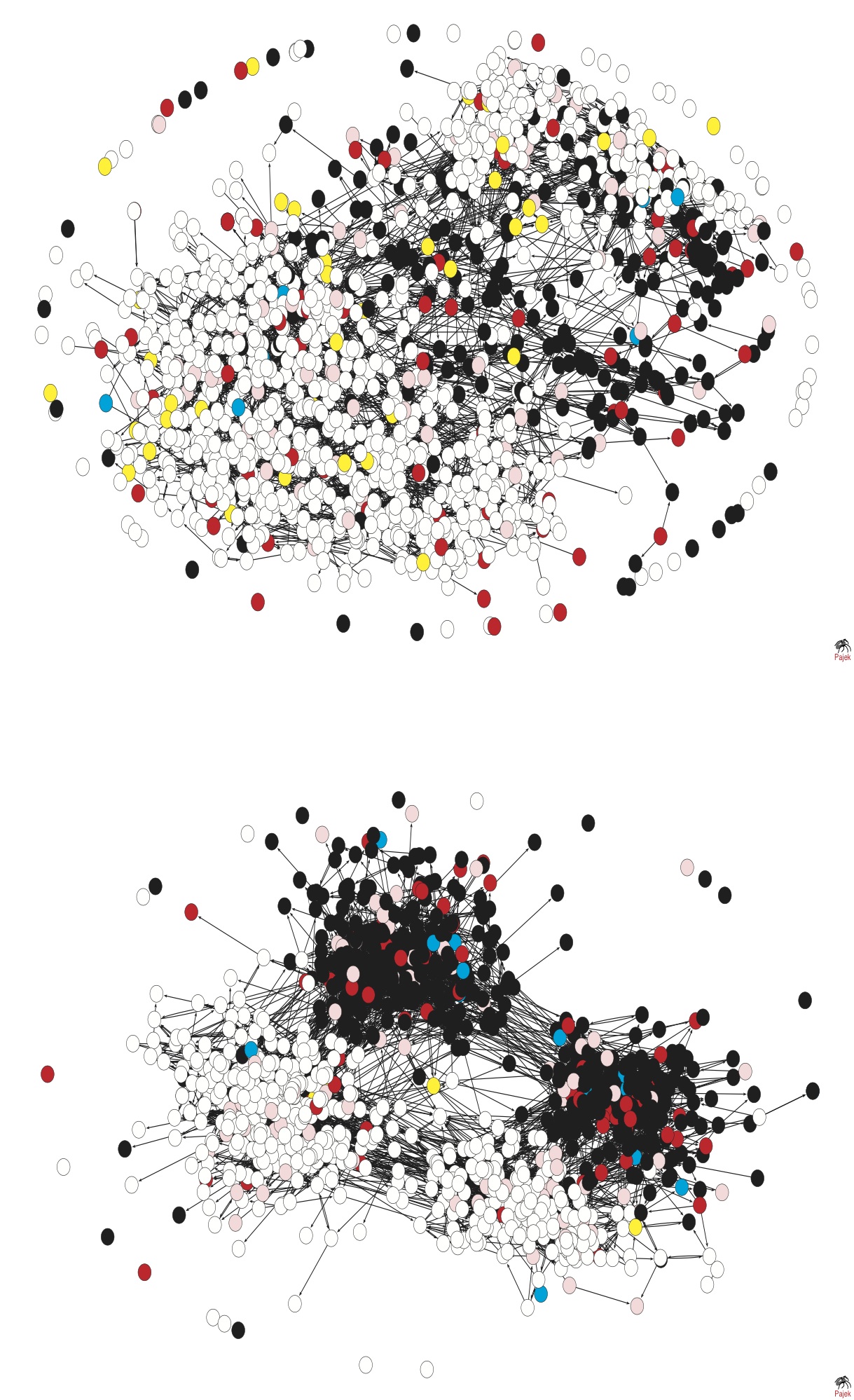Assessing the relevance of features for network structures
BIOGRAPHY
RESEARCH
- MULTILAYER NETWORKS
- NETWORK GEOMETRY
- TEMPORAL NETWORKS
- NETWORK CONTROL
- BIANCONI-BARABASI MODEL
- CONDENSATION TRANSITIONS
- CRITICAL PHENOMENA ON NETWORKS
- SUBGRAPHS: LOOPS AND CLIQUES
- ENTROPIES OF NETWORK ENSEMBLES
- ENTROPIES FOR INFERENCE PROBLEMS
- BIOLOGICAL NETWORKS
GROUP AND ALUMNI
CONTACT
Real networks are usually formed by heterogeneous nodes which differ from each other by a given set of features.
In social networks individuals differ under many different aspects which might be relevant for sociological studies, in ecosystems species have different phylogenetic distance, body mass, and trophic level, in the Internet the routers differ for example by having a different position in space, in the cell proteins have different concentrations...
The basic problem in this respect for these and many other examples is:
how much a feature assignment is relevant for the description of a network?
In the paper [1] we have build an indicator &Theta, free of information bound, able to assess the relevance of a feature assignment for network. This indicator is build upon ENTROPY MEASURES.
Entropy measures can also be applied to study gene-expression data and the community structure of multilayer networks.
 Plot of a friendship networks in USA high schools. The color indicates the different self-reported ethnicity of the students. The two networks have similar number of nodes and similar modularity but significantly different indicator &Theta. |
|---|
Selected publications
-
G. Bianconi, P. Pin and M. Marsili,
Assessing the relevance of node features for network structure
PNAS 106, 11433 (2009).
-
James West, Ginestra Bianconi, Simone Severini, and Andrew E. Techendorff,
Differetial network entropy reveals cancer system hallmarks
Scientific Reports 2 802 (2012) -
G. Menichetti, G.Bianconi, G. Castellani, E. Giampieri, D. Remondini,
Multiscale characterization of ageing and cancer progression by a novel entropy measure,
Mol. Biosys. DOI:10.1039/C5MB00143A (2015). -
J. Iacovacci, Z. Wu and G. Bianconi,
Mesoscopic structures reveal the network between the layers of multiplex data sets,
Phys. Rev. E 92, 042806 (2015).
Matlab codes
- Code for evaluating the indicator &Theta THETA
- Code for calculating the entropy of networks with given assignment of color to the nodes ENTROPY_TYPES
- Code for calculating the entropy of networks with given position in space ENTROPY_DISTANCE